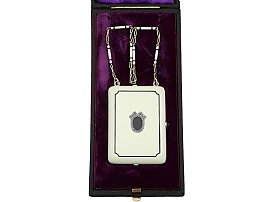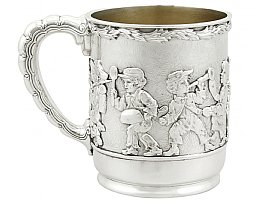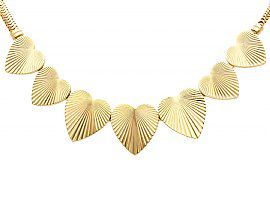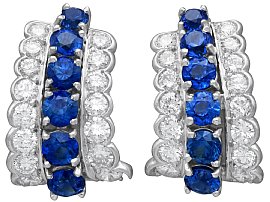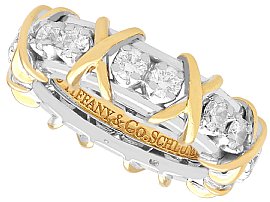Tiffany & Co.
Tiffany & Co. was founded in 1837 in New York City by Charles Louis Tiffany and John B. Young, and was initially a retailer of stationary and other luxury homeware.
Tiffany & Co.’s silverware department was founded in 1845, at which time they funded and oversaw the production of silverware through reputable silver makers such a John Polhamus and Gorham -selling them under the name of the Tiffany name until 1868. Then in 1869, the company bought the John C. Moore silversmithing firm, and Tiffany began producing its own patterns for flatware and cutlery.
The success of Tiffany was initially due to the merchandise which the company imported from the East, India, and continental Europe. These styles were very popular within the American market, and the more affordable trade, especially from the Far East, allowed for Tiffany to become profitable.
In 1841 J. L. Ellis joined the company and the name became Tiffany, Young and Ellis, and following this the first of the infamous Tiffany ‘Blue Books’ was published. These Blue Books served as an upmarket catalogue which the public could peruse and order from, and this was the first time that silverware was officially sold and offered by Tiffany & Co. All of these first pieces of silverware were small, personal items of silverware which were likely imported.
In 1847, Tiffany & Co. moved to larger premises owing to the company’s success, and this allowed the increase in production of Tiffany’s own silverware and Tiffany & Co. jewellery line. The Tiffany silverware was mostly created by silversmiths from New York, and featured the maker’s marks alongside the Tiffany retailer’s mark.
In 1851, Tiffany decided to apply the higher .925 standard of silver purity to its silverware – the same as the British standard- not only firmly establishing the company as a name in high quality silverware, but justifying higher prices, an d a place alongside in the luxury silver retailers of the world. This standard would eventually become required of American Silver makers, largely due to Tiffany personally lobbying members of Congress for this change.
Young and Ellis retired from the firm, meaning that Charles Tiffany regained control of the company, and changed the name to Tiffany & Co., as we know it today.
In 1867, Tiffany & Co. became the first American retailer to win an award for excellence in silver at the Exposition Universelle in Paris. After this, Tiffany officially became a silverware manufacturer as well as retailer, which meant that Tiffany’s was fully in control of the silverware which was produced as well as creating the opportunity for Tiffany’s first flatware pattern, which debuted in 1869.
Subsequently, Tiffany flatware patterns became some of the most popular in the world, which were frequently purchased as wedding gifts. These patterns continued to achieve worldwide accolades for both the design and quality of the silverware, further securing Tiffany & Co’s reputation as one of the world’s most highly sought after and collectable silverware makers.
